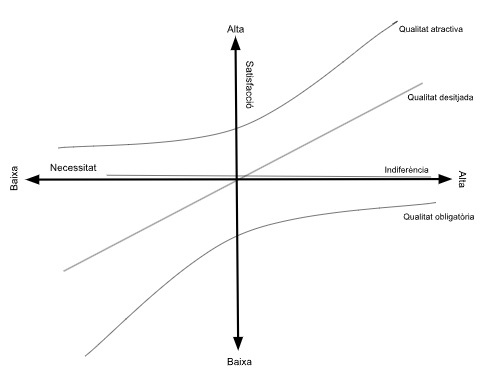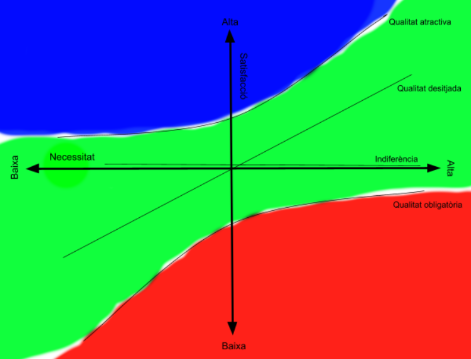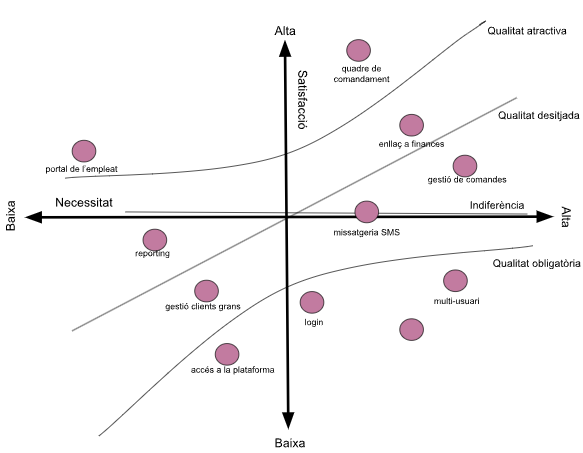Often a product is made up of multiple needs that, taken individually, it is difficult for us to determine whether it provides value or not, or to what degree. Or if the user simply values it in the same way as we do.
The Product Owner has several tools available to classify the list of needs in a way that makes it a little easier for him to make decisions regarding prioritization. Here we present one of these tools called: KANO Model
The KANO model applies to all those sessions of identification, classification and prioritization of needs
The KANO model presents a diagram that highlights two useful aspects when carrying out a classification and prioritization of needs:
Customer satisfaction: This variable attempts to provide a value on how critical the specific need is from the user’s perspective. Degree of need: This variable attempts to provide a value on how this need responds to or covers necessary aspects of the business and the product
With these two variables we can draw a grid from which to locate our needs. Initially, our grid looks like the following:

This provision guides us on three areas from which our needs can be located:
In addition, in the graph we can find a small area that corresponds to the horizontal of satisfaction, called indifferent quality or indifference. The needs located in this area do not provide special value to the final product from the perspective of users

This activity, like all those related to the classification and prioritization of needs, does not have an estimated time. In addition, we must be aware that, most likely, it will not be enough with a single session, since the list of needs is a living element in the project.
In any case, and as a recommendation, it is advisable to propose these sessions as activities that do not exceed two hours in duration, and that do not deal with an excessive number of needs. Both the excess of time and elements to be discussed can cause a feeling of low control in the attendees.
Once the session has started, attendees are informed about the objectives of the session (prioritization of needs), and a presentation of the needs to be classified is made. For each of them, a turn is established for explanation and resolution of doubts or debate, in order to ensure that all attendees align their expectations about the need in question.
Subsequently, either at the end of the explanation turn for a need, or when all the explanations have been completed, they are placed on the grid in the following way:
Thus we can have an image similar to this:

Model KANO a la wikipèdia (https://en.wikipedia.org/wiki/Kano_model)
What is the KANO model? product plan.com (https://www.productplan.com/glossary/kano-model/)
Modelo de KANO economipedia.com (https://economipedia.com/definiciones/modelo-de-kano.html)